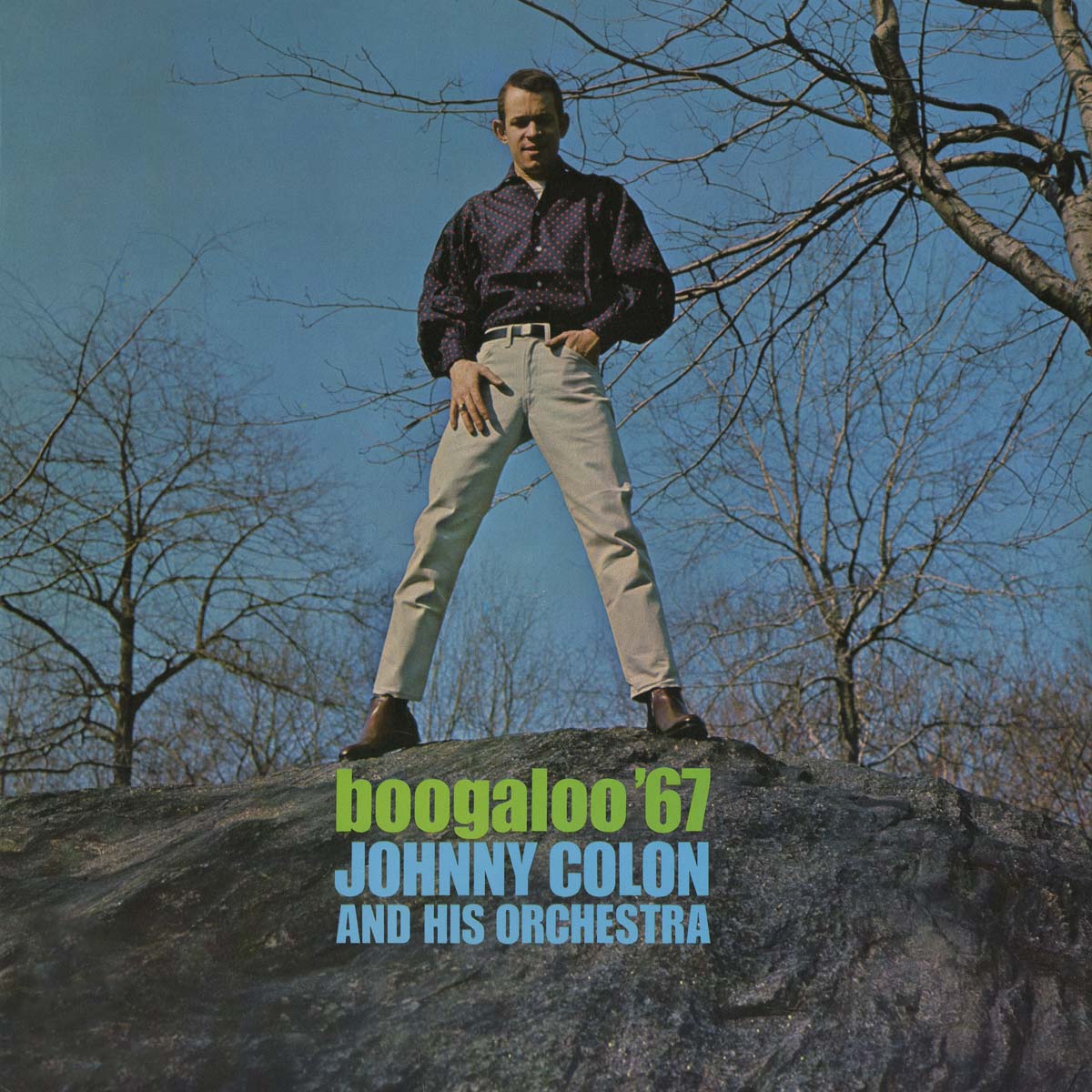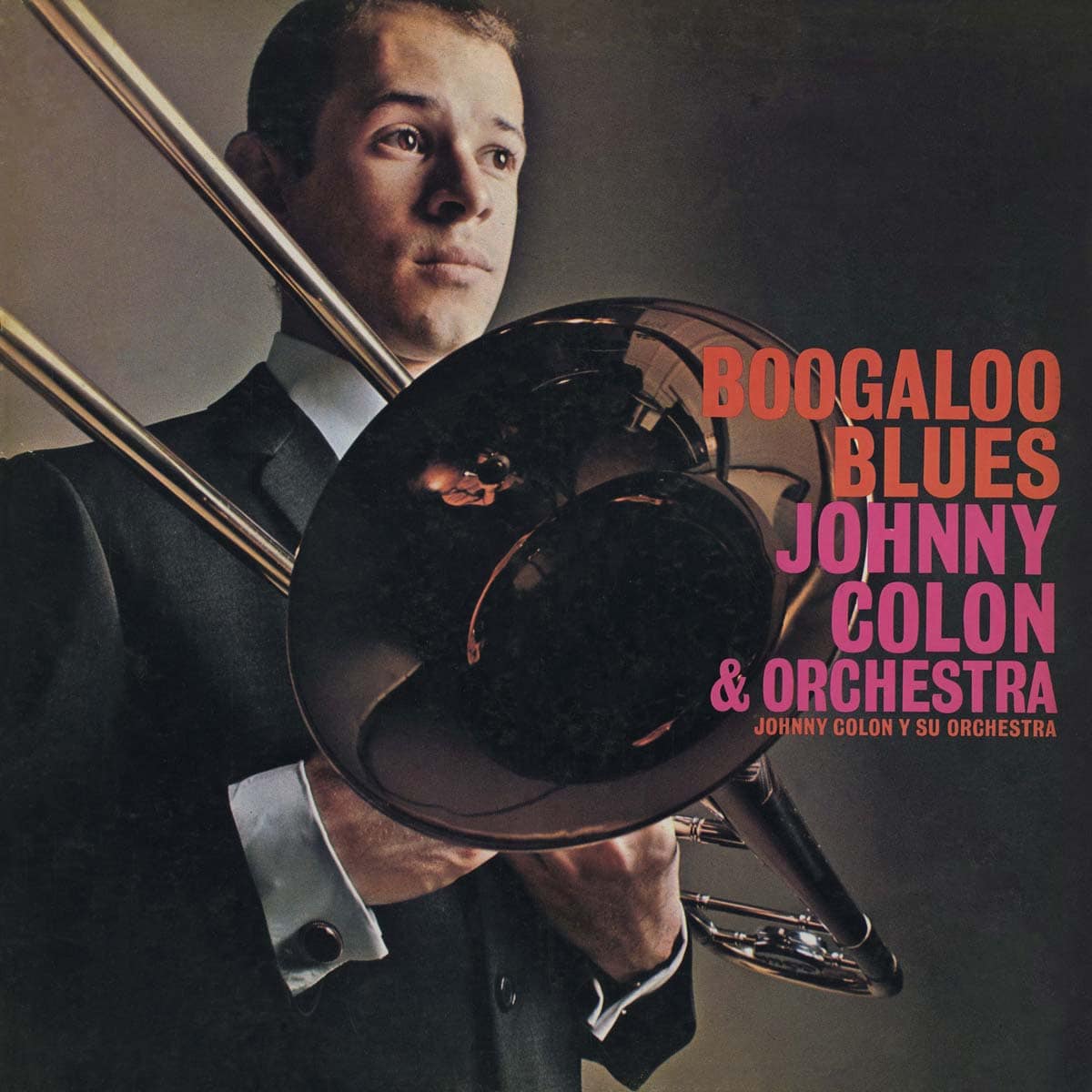
Nine months after Boogaloo Blues rocked New York City and steered the course of Latin music into a new era, Johnny Colón and His Orchestra followed up with their sophomore effort, Boogaloo ’67, an energetic masterpiece on the cutting edge of the city’s Latin sound.
Made at the peak of the boogaloo craze, when both new and established Latin artists were churning out attempts at Latin crossovers, Boogaloo ’67 was far from your average boogaloo record. The deep harmonies on both the vocals and horns stand out. Johnny Colón’s trombone is aggressive, and the band stays in the pocket for unimaginable lengths that tingle the senses. Dancers beware: you will not be able to stop moving until this album is through. The rhythm section is tight and free, with the sweetest of Latin piano chords played over percussion and bass that burn songs into your soul at their introduction.
The whole album has a live, improvisatory feel, filled with the boogaloo trademarks of excited handclaps and shouts. “They were all live sessions; there was no layering,” says Colón, who remembers the album was recorded in only two days. “We always tried to make sure we kept a party sound, like the people who were listening would feel the party.” Colón, who was born in New York of Puerto Rican parents and raised in East Harlem, was twenty-five years old at the time. His band had grown up some since their first recording, which had launched them into what Colón calls the “major leagues” of the Latin band circuit in New York. From the minute the popular jazz and Latin radio disc jockey Symphony Sid first played “Boogaloo Blues,” Johnny Colón and His Orchestra were in demand. They had been performing nonstop in the city’s hottest Latin music venues when they came into the studio to record Boogaloo ’67. “Once you play in the major leagues, you get a feeling, allowing you to experiment with musical forms, and also get incredible input from your audience,” says Colón. But Boogaloo ’67 almost never happened. Colón had yet to see any royalties from Boogaloo Blues, a monster hit from 1967 that sold over a million copies.
Nor had the band even been paid for the recording sessions. Colón refused to go into the studio again until George Goldner, the producer and head of Cotique Records, paid the band for the previous session. According to Colón, Goldner finally complied, and the second album was made. His inspiration for the songs on Boogaloo ’67 came first from his personal life. “The best work I did was when I was going through some discord in a relationship,” says Colón. “That made me write a lot, and that’s when I listened to music the most.” He was going through a tough divorce at the time, and some of the songs were written with his ex-wife in mind. Listening to all kinds of music was an important part of Colón’s creative process. Among his many musical interests, he had always been a big fan of jazz. Colón says that artists like piano player Horace Silver and trombonists J. J. Johnson and Kai Winding were big influences. Playing in the major leagues of the Latin band circuit afforded Colón more exposure to his jazz contemporaries, who played in some of the same venues such as the Village Gate. “I was trying to kind of do the unexpected, to let it fly, and just throw it out there,” says Colón of his compositions on Boogaloo ’67. “Guys like Kai Winding and J. J. Johnson gave me the freedom to say, ‘Hey, if they can do it…’” While inserting some of his jazz influences and experimenting with new musical forms, Colón was also interested in delving deeper into his Latin roots. “I was trying to go into a slightly more Latin thing,” says Colón. “I wanted to stay with some of the American-lyrics stuff, because it worked, but if you notice, none of the songs have a backbeat. We were trying to get back into the swinging stuff. We were trying to do a lot more stuff [that] we were doing in the live performances.”
Colón never wanted his band to be considered strictly a boogaloo band, and on Boogaloo ’67, their strength as a Latin music orchestra is clearly evident. Though Colón says the album sold only about half as many copies as Boogaloo Blues, he admits it is the better of the two. “It was tighter and more musical to some extent,” says Colón, “and I think more well thought out.” It was the last recording the original Johnny Colón and His Orchestra would do. Rafael “Tito” Ramos and Tony Rojas would soon leave the band to create the Latin soul outfit the TNT Band. Colón would go on to record four more albums before leaving the recording business in the early ’70s to focus on his other passion, teaching music; he founded the East Harlem Music School in 1972. Today, Colón’s music is appreciated worldwide by fans of all ages. And, as Symphony Sid calls him in the original liner notes for this record, “Mr. Boogaloo Blues” is still swinging. Boogaloo ’67 is a treasure and a wonderful representation of the best of New York’s Latin sound during the late ’60s.
Liner notes by Mathew R. Warren Johnny Colón and His Orchestra Boogaloo ’67 (Cotique 1007) Originally released in 1967 Produced by George Goldner Music coordinator: Julie Aletras Recorded at Mirasound Studios Engineered by Ron Johnson Original artwork and cover design by John Murello Original cover photograph by Charles Stewart Musicians Johnny Colón: lead vocal, piano, and trombone Rafael “Tito” Ramos: lead vocal Tony Rojas: vocal Robert Lemus: first trombone Angelo Rodríguez: second trombone Ray Cruz: timbales Milton Cardona: congas Mike Amitin: bass



